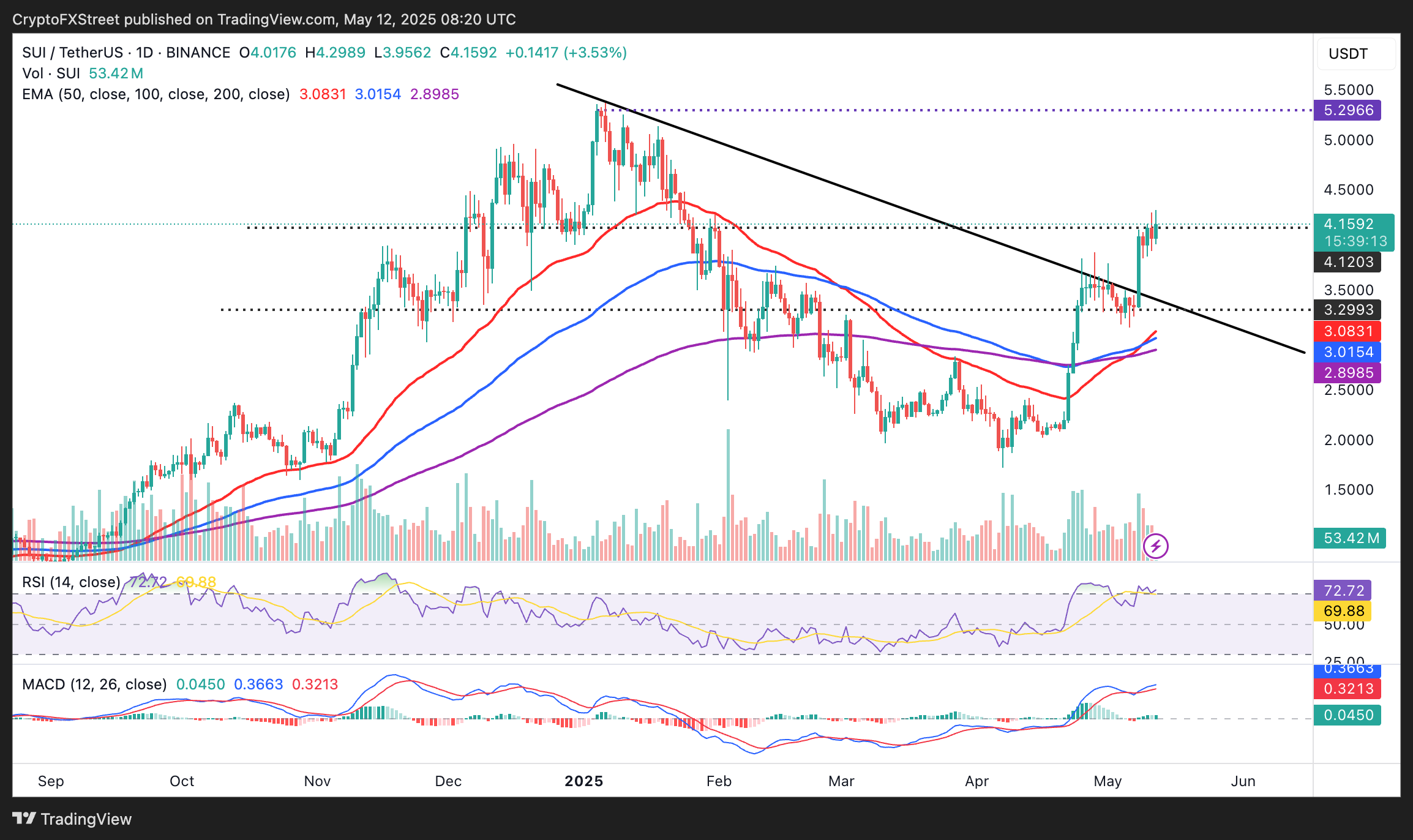Sui rockets toward all-time high as its blockchain disrupts AI, gaming, and DeFi
Sui’s network surges past legacy chains—rewriting the rules for AI integration, play-to-earn economies, and decentralized finance. Traders scramble as the token flirts with record prices, while VC-backed ’experts’ suddenly remember they ’always believed’ in the project.
The L1’s blistering speed and low fees are stealing market share from Ethereum clones, proving once again that crypto’s killer app is still speculative greed wrapped in tech buzzwords.
How Sui is redefining AI, gaming and DeFi
Sui is preparing for the “The Great SUI Odyssey #5” event in Vietnam on Saturday. The event focuses on how Sui redefines Artificial Intelligence (AI), gaming, and Decentralized Finance (DeFi) for developers in the ecosystem.
The layer-1 blockchain leverages its scalability to empower builders with fast, secure, and accessible solutions, while enabling innovative applications like Large Language Models (LLMs) through blockchain synergy.
The protocol’s high throughput and dynamic assets enhance engagement and functionality in gaming. Sui’s first quarter DeFi Roundup emphasised the network’s liquidity and performance, driving efficient financial applications.
Sui eyes new all-time highs
Sui’s price is grinding higher at $4.15 at the time of writing, mirroring broader bullish momentum in the market, as investors digest the de-escalation of trade tensions between the US and China.
The Moving Average Convergence Divergence (MACD) indicator supports the uptrend, eyeing a breakout to new all-time highs past Sui’s price in the first quarter at a peak of $5.38. Traders will likely seek exposure to SUI with the MACD line (blue) above the signal line (red).
The 50-day, 100-day, and 200-day Exponential Moving Averages (EMAs) are significantly below the current price, indicating that the shorter-term trend remains bullish. Traders WOULD look for a move above resistance at $4.20 to ascertain the uptrend’s strength towards the record high of $5.38.

SUI/USD daily chart
Following the massive rally from the April 7 low of $1.71, the Relative Strength Index (RSI) at 72.72, which peaked at 75.5 on Thursday, hints at consolidation or trend weakness.
An RSI reading above 70 highlights overbought conditions, often precursors to pullbacks, as seen with Sui’s drawdown from $3.93 to 2.98 in November, when the indicator topped out at 84. With that in mind, it would be prudent if traders prepared for different outcomes, including a retracement targeting support at the descending trendline and the confluence around $3.00 formed by the 50-day EMA and 100-day EMA.
Cryptocurrency prices FAQs
How do new token launches or listings affect cryptocurrency prices?
Token launches influence demand and adoption among market participants. Listings on crypto exchanges deepen the liquidity for an asset and add new participants to an asset’s network. This is typically bullish for a digital asset.
How do hacks affect cryptocurrency prices?
A hack is an event in which an attacker captures a large volume of the asset from a DeFi bridge or hot wallet of an exchange or any other crypto platform via exploits, bugs or other methods. The exploiter then transfers these tokens out of the exchange platforms to ultimately sell or swap the assets for other cryptocurrencies or stablecoins. Such events often involve an en masse panic triggering a sell-off in the affected assets.
How do macroeconomic releases and events affect cryptocurrency prices?
Macroeconomic events like the US Federal Reserve’s decision on interest rates influence crypto assets mainly through the direct impact they have on the US Dollar. An increase in interest rate typically negatively influences Bitcoin and altcoin prices, and vice versa. If the US Dollar index declines, risk assets and associated leverage for trading gets cheaper, in turn driving crypto prices higher.
How do major crypto upgrades like halvings, hard forks affect cryptocurrency prices?
Halvings are typically considered bullish events as they slash the block reward in half for miners, constricting the supply of the asset. At consistent demand if the supply reduces, the asset’s price climbs.

